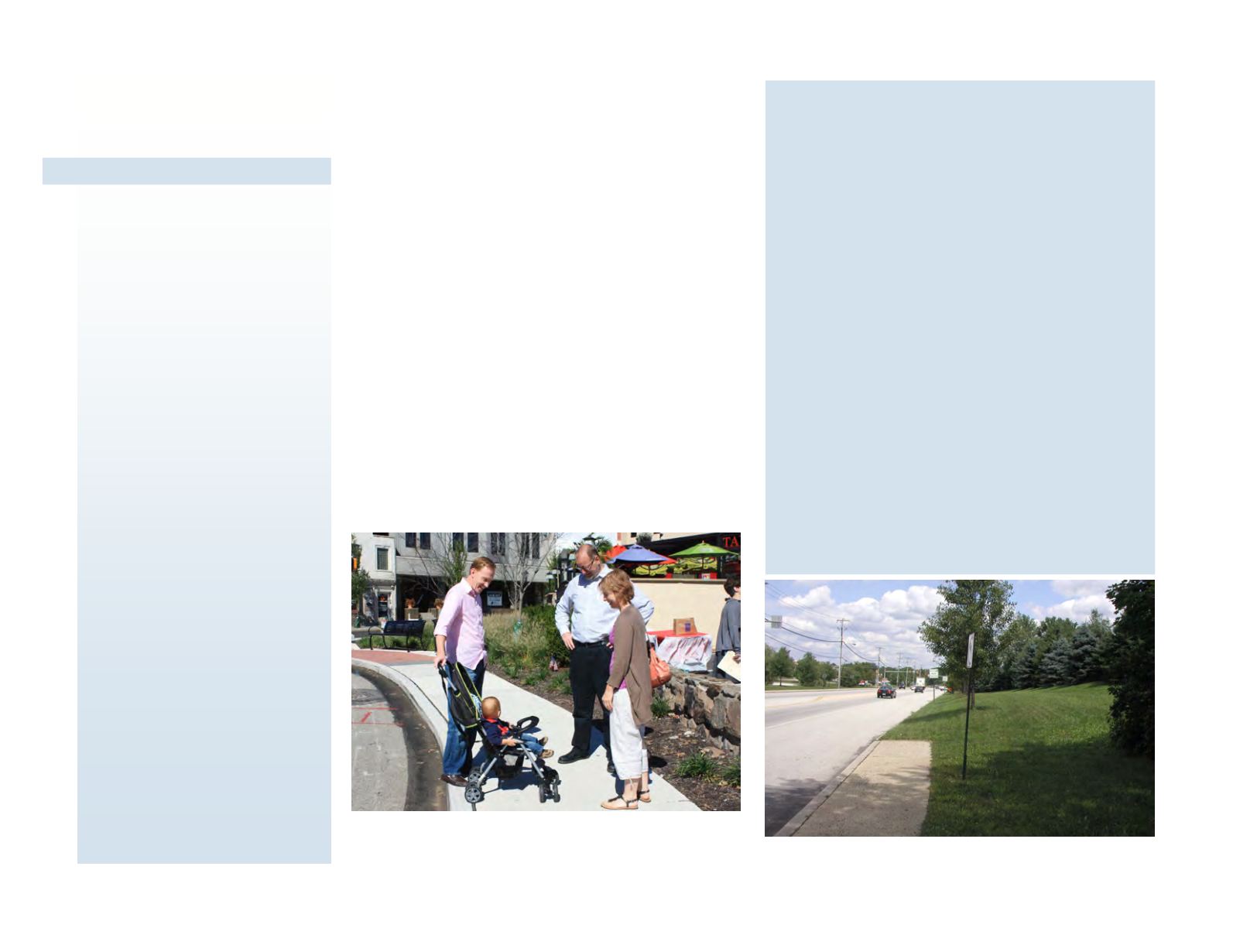
100
THE COUNTY’S TRANSPORTATION NETWORK
PLANNING ISSUE
It is difficult to walk easily and
safely in much of the county,
and even in walkable areas
the sidewalk network is often
incomplete and poorly
designed.
Vehicles
Transit
Pedestrian Mobility
Bicycle Mobility
Aviation
Freight
Pedestrian Mobility
PennDOT’s
Smart Transportation Guidebook
states that
pedestrian activity is best accommodated by a connected
network of sidewalks, complementary land uses, attractive
streetscaping, controlled pedestrian crossings, and lower
traffic speeds.
Sidewalks support safety and mobility. Some of the
county’s older downtowns and residential neighborhoods
have a well-developed interconnected network of sidewalks.
Some may not meet current national standards for width but
they provide a separate area for pedestrians to walk that is
distinct from the roadway. Newer suburbs that developed
after World War II have fewer sidewalks, the product of a
planning philosophy that favored cars. Even areas that do
have pedestrian facilities may not be connected to any points
of interest.
The term “walkability” refers to the friendliness of an area to
walking. Many elements determine walkability, including
sidewalks, street connectivity, the mix of land uses,
residential density, the orientation and proximity of homes
and buildings to watch over the street, a variety of points-of-
interest, plenty of places to go to near the majority of homes,
and street designs that work for people, not just cars.
What’s New
Over the past decade, there has been more interest in
making places walkable:
•
Suburban Sidewalks
- Many suburban
communities like Montgomery and Upper Merion
Townships require sidewalks when in the past,
developers may have been allowed to avoid
building them.
•
Streetscaping
- Many towns have installed or
improved their streetscaping to enhance
walkability, such as Ardmore, Conshohocken,
Bridgeport, Royersford, East Greenville, Roslyn,
Pennsburg, West Conshohocken, Souderton,
Hatfield, Lansdale, North Wales, Ambler,
Rockledge, Jenkintown, Glenside, and Keswick.
•
Traffic Calming
- Some places, like Jenkintown,
Limerick, and Upper Providence, have installed
speed humps and other devices to slow traffic and
make streets safer for pedestrians.
•
PennDOT
- Two new PennDOT publications, the
Smart Transportation Guidebook
from 2008 and
Improving Connectivity and System Function
through Local Planning
from 2012, support
stronger pedestrian networks.
Many towns across the county have improved their sidewalks and
streetscaping, making it easier for pedestrians to move around safely.
In many places, the sidewalk network is incomplete.


